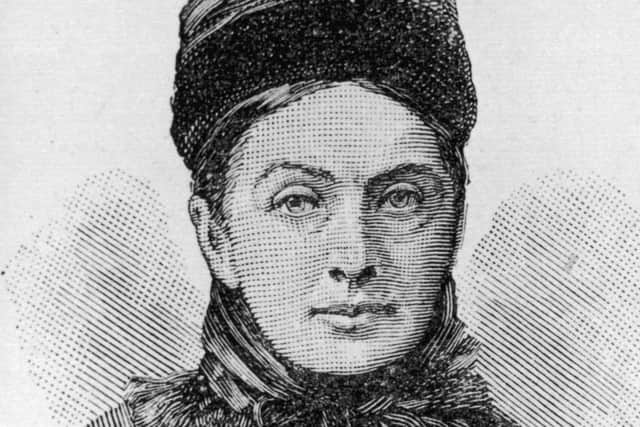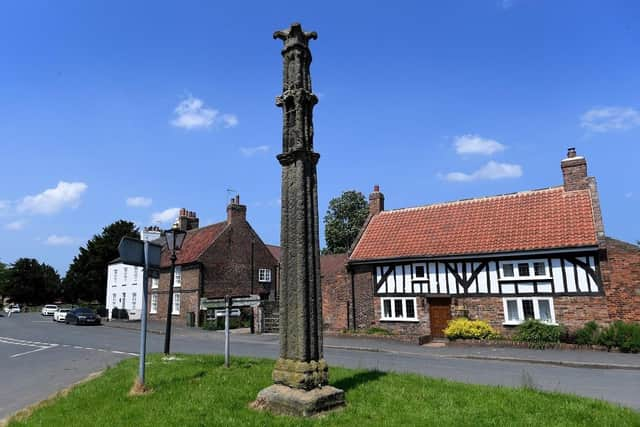Who was Isabella Bird? The real-life Yorkshire Trailblazer behind the BBC Two show starring Emily Atack, Mel B and Ruby Wax
The three-part TV series Trailblazers: A Rocky Mountain Road Trip will retrace the steps of 19th century explorer, Isabella Bird. The documentary will air its first episode on Monday, November 28, 2022 at 9pm on BBC Two and BBC iPlayer.
The limited series will see three generations of trailblazing women, Ruby Wax, Melanie Brown and Emily Atack, join together to follow in the (literal) footsteps of Victorian explorer Isabella Bird. She crossed the lawless American Wild West, rode on a horse for 800 miles through the Rocky Mountains in Colorado and came face to face with wild bears.
Advertisement
Hide AdAdvertisement
Hide AdIsabella paved the way for women to take on adventures during a time when most explorers were men. She founded the John Bishop Memorial Hospital in Srinagar, now known as Kashmir, and was the first woman to be elected Fellow of the Royal Geographical Society.


Who was Isabella Bird?
Isabella Bird was born on October 15, 1831 in Boroughbridge Hall in the Harrogate district of North Yorkshire, which was the home of her maternal grandmother and her father’s first curacy after taking orders in 1821. Her parents were Reverend Edward Bird and his second wife, Dora Lawson and her paternal grandparents were Lucy Wilberforce Bird and Robert Bird.
Throughout her childhood, Isabella had moved with her family many times and in 1832, Reverend Bird was selected curate in Maidenhead. However, due to her father’s ill health, the Bird family moved again in 1834 to Tattenhall in Cheshire, which was offered to her father by his cousin Dr John Bird Sumner, Bishop of Chester, where Isabella’s sister, Henrietta, was born that same year.
From a very young age, Isabella was a confident speaker; she questioned the local MP for South Cheshire, Sir Malpas de Grey Tatton Egerton’s motives whilst campaigning when she was just six years old. She asked him: “Did you tell my father my sister was so pretty because you wanted his vote?”


Advertisement
Hide AdAdvertisement
Hide AdFollowing a rather hostile reaction to her father’s alleged controversial views against Sunday labour, he requested a transfer in 1842 to St Thomas’s in Birmingham, where he was again faced with opposition over his views and was pelted with stones, mud and insults.
Two years later, the family moved again to Eastbourne, where they spent some time before moving again to Wyton in Huntingdonshire, now known as Cambridgeshire.
Following a spinal cord injury in her early childhood, Isabella was frail and suffered from nervous headaches and insomnia. Her doctor recommended an open-air life and as a result, she began to ride horses from a young age and later learned to row.
She was home-schooled by her parents; her father was a botanist and taught her flora, and her mother taught her daughters a varied mixture of subjects. Isabella became an enthusiastic reader, however, it was clear that most of her intelligence and knowledge came from her curiosity of the outside world.
Advertisement
Hide AdAdvertisement
Hide AdShe published her first piece of literature when was just 16, a pamphlet addressing free trade in comparison with protectionism and since then she continued writing articles for various publications.
In 1850, she had a fibrous tumour removed from close proximity to her spine and she continued to suffer from unspecified health conditions resulting in a lack of energy and insomnia. The Bird family spent six summers in Scotland where they attempted to improve her health.
She was urged by doctors to take to the sea, so in 1854 her life of travelling began when the opportunity presented itself in the form of a sailing trip to the US, accompanying her second cousins to their family home. Her father offered her £100 to stay away as long as the journey lasted and Isabella’s colourful letters sent to her family formed the foundation of her first published book, An Englishwoman in America (1856). John Murray, did not only end up being her exclusive publisher for her books, he also became one of her closest friends.
She began her voyage initially in Australia in 1872, which she supposedly disliked, then travelled to Hawaii, which she loved so much that it was the inspiration for her second book. While she was there she climbed Mauna Kea and Mauna Loa and then moved to Colorado, where she had heard the air was perfect for people who struggled with their physical health. She regularly rode horses, not sidesaddle but frontwards, which was the position more common for men.
Advertisement
Hide AdAdvertisement
Hide AdShe rode for more than 800 miles in the Rocky Mountains in 1873 and her letters to her sister were published in the magazine The Leisure Hour and also formed Isabella’s fourth and likely her most famous book, A Lady’s Life in the Rocky Mountains.
Her adventures in the Rocky Mountains were also made more famous by her close friendship with Jim Nugent, known as ‘Rocky Mountain Jim’, an outlaw with one eye and had a penchant for violence and poetry.
Back home, Isabella was pursued by Dr John Bishop, an Edinburgh surgeon in his thirties. She became interested in Japan through John Francis Campbell’s ‘My Circular Notes, 1876’ and requested the advice of Colin Alexander McVean, the former chief surveyor of Japan’s Survey Office, in February 1878, then set off to travel again to various countries in Asia: Japan, China, Korea, Vietnam, Singapore and Malaya.
Isabella accepted John Bishop’s marriage proposal when her sister died of typhoid in 1880 and they got married in February 1881. Later that year she was awarded the Royal Order of Kapiolani by King Kalakaua of Hawaii. Over the next few years, Isabella’s health took a turn for the worse, however, apart from a period of scarlet fever in 1888, her health recovered following the death of her husband in 1886. He had left her a large amount of disposable income in his will. She began to feel that her earlier travels and knowledge of the outside world had been cultivated without a degree, Isabella studied medicine and resolved to travel as a missionary and despite being nearly 60 years old, she set off to India.
Advertisement
Hide AdAdvertisement
Hide AdIn 1889 she travelled to Ladakh on the borders of Tibet, then to Persia, Kurdistan and Turkey. The following year she joined a group of British soldiers travelling between Baghdad and Tehran.
In 1891, she travelled through Baluchistan to Persia and Armenia, where she explored the source of the Karun River and later that year, she gave a speech in a committee room of the House of Commons on the persecutions of Christians in Kurdistan.
By that time she had become a household name and was mentioned in journals and magazines for decades.
She was elected to membership of the Royal Photographic Society on January 12, 1897 and her final great journey occurred in 1897 when she travelled up the Yangtze and Han rivers in China and Korea, respectively. She then went to Morocco, where she travelled among the Berbers.
How did Isabella Bird die and what was her legacy?
Advertisement
Hide AdAdvertisement
Hide AdJust a few months following her trip to Morocco, Isabella fell ill and died at her home on 16 Melville Street, Edinburgh on October 7, 1904, just eight days shy of her 73rd birthday.
She was buried with her family in Dean Cemetery in the west of Edinburgh.
Isabella’s first biography was written by Anne M. Stoddart and published in 1907 and she was used as a character in Caryl Churchill’s play Top Girls in 1982 and most of the dialogue came from Isabella’s own writings.
She was inducted into the Colorado Women’s Hall of Fame in 1985 and was featured in Bedrock: Writers on the Wonders of Geology in 2006.
Advertisement
Hide AdAdvertisement
Hide AdIsabella is also the main character of the manga Isabella Bird in Wonderland, a novel of her travels to Japan.
The clock tower on Tobermory, Mull harbour wall was funded by Isabella in memory of her much loved sister, designed by mountaineer and explorer Edward Whymper.
Comment Guidelines
National World encourages reader discussion on our stories. User feedback, insights and back-and-forth exchanges add a rich layer of context to reporting. Please review our Community Guidelines before commenting.
